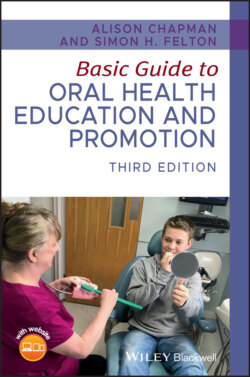Читать книгу Basic Guide to Oral Health Education and Promotion - Alison Chapman - Страница 106
PERI‐IMPLANT MUCOSITIS AND PERI‐IMPLANTITIS
ОглавлениеPeri‐implant mucositis is a reversible inflammatory reaction causing redness and swelling localised to the soft tissue around implants.
Dental implants are used to replace missing teeth either on their own, as part of a bridge, or as an attachment for a denture. Modern implants have been used in dentistry since the 1960s (and are also used in other areas of the body for attaching prosthesis, such as in the ear).
The dental implant consists of a titanium screw placed in the bone of the maxilla or mandible, which is then left for up to six months to integrate with the bone before the final restoration is attached to it. They can be used to replace one tooth, as part of a bridge, or the foundation for a denture that either clips to the implant or is permanently placed. When designing the restoration, the ability to clean thoroughly around it should be considered as they can fail if excellent oral hygiene is not maintained.
The area around the junction between the implant and restoration is subject to gingival inflammation and bone loss just like a natural tooth with plaque and calculus accumulation. The depth of the gingival sulcus (gingival crevice) is deeper than that of a natural tooth and can be 3–4 mm.
Similar to gingivitis progressing to periodontitis, peri‐implant mucositis can progress to peri‐implantitis, which involves destruction of the bone (Figures 4.8, 4.9). The tissues around the implant should look similar to that of a natural tooth: pink, firm and stippled.
The patient should have regular dentist or hygienist appointments to assess, as early intervention in the event of a problem is important to prevent failure of the implant.
